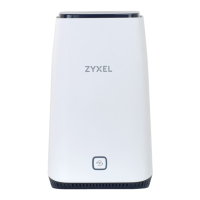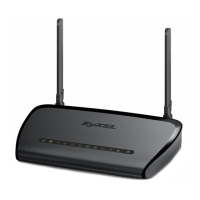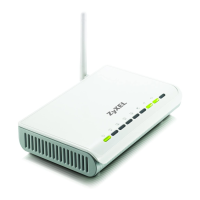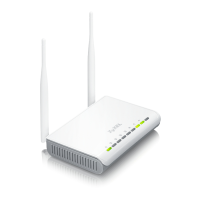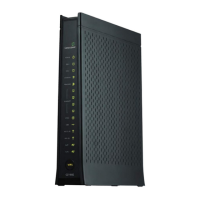Chapter 8 NAT
NR2101 User’s Guide
78
8.3 Technical Reference
The following section contains additional technical information about the NR2101 features described in
this chapter.
8.3.1 NAT Port Forwarding: Services and Port Numbers
A port forwarding set is a list of inside (behind NAT on the LAN) servers, for example, web or FTP, that you
can make accessible to the outside world even though NAT makes your whole inside network appear
as a single machine to the outside world.
Use the Port Forwarding screen to forward incoming service requests to the server(s) on your local
network. You may enter a single port number or a range of port numbers to be forwarded, and the local
IP address of the desired server. The port number identifies a service; for example, web service is on port
80 and FTP on port 21. In some cases, such as for unknown services or where one server can support
more than one service (for example both FTP and web service), it might be better to specify a range of
port numbers.
In addition to the servers for specified services, NAT supports a default server. A service request that does
not have a server explicitly designated for it is forwarded to the default server. If the default is not
defined, the service request is simply discarded.
L2TP VPN Pass-Through Select Enable to allow VPN clients to make outbound L2TP connections. It is required
in order to connect to a L2TP VPN account. If L2TP is disabled, then when a client
sends a request to a VPN server, the server will reply to the NR2101 and the NR2101
will drop the request. When L2TP is enabled, the NR2101 will forward the reply from
the VPN server to the client that initiated the request, and the connection will
establish successfully.
Webserver WWAN Access Select Enable to activate remote web server management.
DMZ IP
Enter the IP address of the default server which receives packets from ports that are
not specified in the port forwarding table.
Port Forwarding
Port forwarding allows you to define the local servers to which the incoming services
will be forwarded. You can configure a new schedule rule by clicking Add Entry. You
can view the schedule rules by clicking Get Entries.
Serial: This field displays the serial number of an individual port forwarding server
entry.
Private IP: This field displays the IP address of the virtual server on the LAN.
Private port: A private port refers to the port number of a host when the packet is in
the LAN side.
Global port: A global port refers to the port number of the host when the same
packet is traveling in the WAN side.
Protocol: Select the protocol (TCP_UDP, TCP, UDP, or ICMP) used to transport the
packets for which you want to apply the rule.
Delete: Click Delete to delete an existing port forwarding rule.
Modify: Click Modify to edit an existing port forwarding rule.
Table 31 NAT SETTINGS
LABEL DESCRIPTION
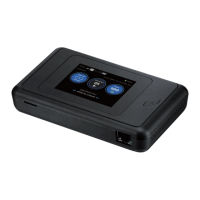
